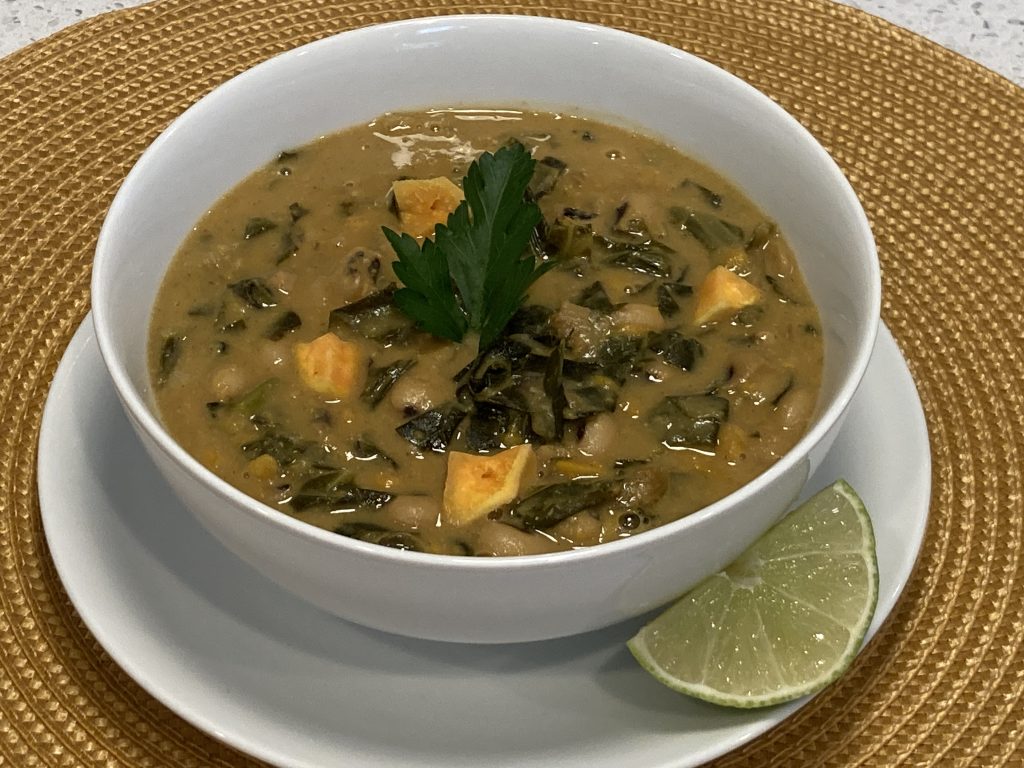Black-Eyed Peas Fives Ways for a Lucky 2023

As we turn our attention from Christmas to welcoming the new year, it seems fitting to offer yet another recipe for lucky black-eyed peas. Drumroll please… for African Black-Eyed Pea Stew!
It’s the rich peanut butter and spices that make this African style of cooking black-eyed peas so delicious—though that doesn’t mean spicy hot, at least not when I make it. I use spices sparingly so that I can make every dish mouth-watering (and often memorable) without upsetting my digestion. But suit yourself if fiery is your preference, as African chefs do love cooking with chilies. I enjoyed using collards in this dish because the collards have a particularly earthy flavor.
Eating black-eyed peas with greens has been linked with good luck for centuries because the peas were said to look like coins and the greens represented paper money. In modern times millions of people in the U.S.—especially in the South and in the Midwest—celebrate New Year’s Day with a favorite black-eyed pea dish to attract good fortune in the coming year.
Black-eyed peas are thought to have entered Southern colonies with African slaves. Although this favorite Southern dish has that tragic association, it remains popular even in African American communities today.
While planning your New Year’s Day meal, you may also want to check out these recipes:
Black-Eyed Pea Soup with Winter Squash and Collards
Curried Black-Eye Peas
Black-Eye Pea Salad
Stuffed Chard with Black-Eyed Pea Paté, page 150-51 (photo page 132) in Sacred & Delicious: A Modern Ayurvedic Cookbook.
As the year ends, let me take this moment to thank each of you for your continued enthusiasm as you follow the Sacred & Delicious Blog and comment on the Sacred & Delicious Facebook page. Your delight in cooking fresh food along with sustaining your good health are always at the forefront of my mind when I develop new recipes.
May the year ahead be filled with many joyful occasions to savor food that is both sacred and delicious!
Print




Hi Lisa, I noticed in the picture that there is a lime wedge. Is this something you recommend on the stew? I didn’t see anything about it in the recipe. Thanks! This looks delicious and it’s going to be my “hoppin john” this year. 🙂
So sorry I missed seeing your question back when you wanted the answer! Yes, a splash of lime can add another perfect flavor to the dish.